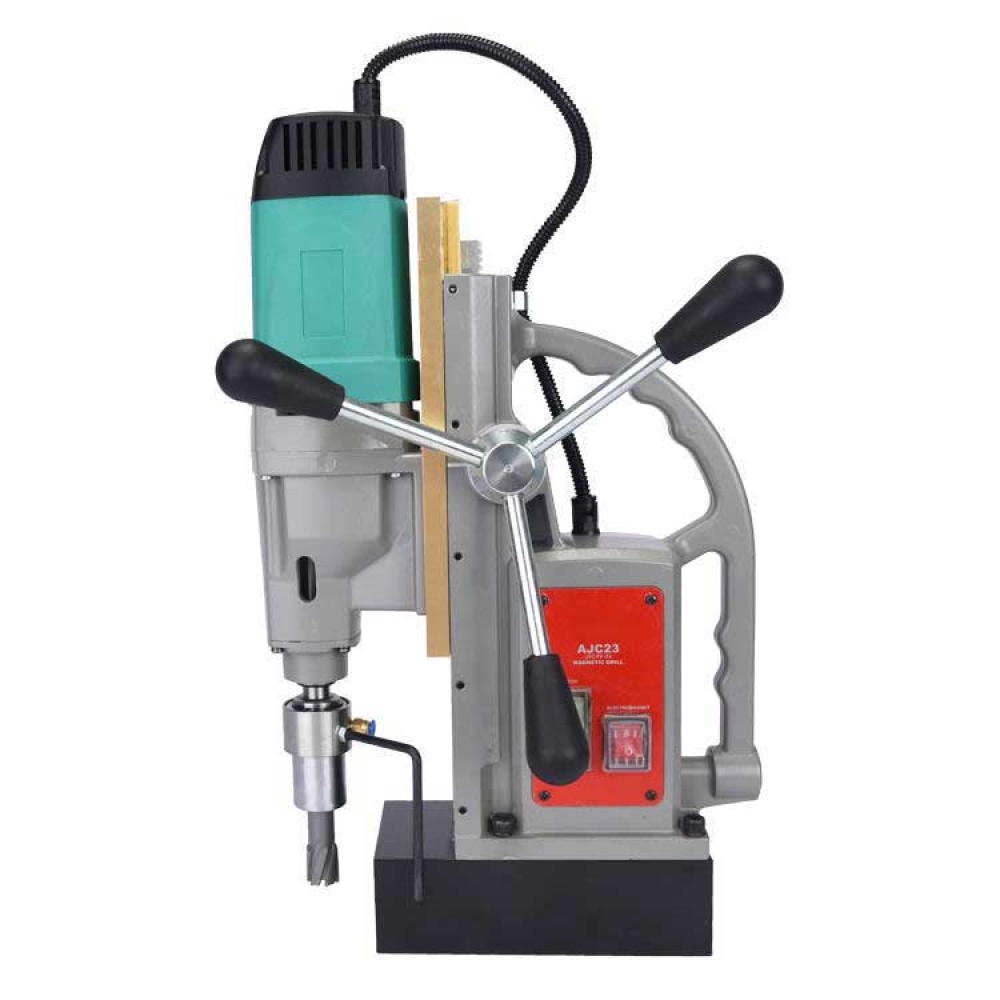In-Depth Analysis of Magnetic Drills: The Versatile Tool for Industrial Drilling
Introduction: In modern industrial production, precise and efficient drilling operations are key to improving production efficiency and product quality. Magnetic drills, as a revolutionary drilling tool, have played a significant role in various industrial sectors due to their unique advantages. This article will take you through the working principle, types, applications, operation tips, buying guide, and future trends of magnetic drills, giving you a comprehensive understanding of this industrial powerhouse.
1. Introduction to Magnetic Drills Magnetic drills, also known as magnetic base drills, are electric tools that use electromagnetic principles for quick fixing and drilling on metal surfaces. Comprising a magnetic base, motor, gearbox, and drill bit, they can adhere directly to metal surfaces without additional fixtures, enabling rapid and accurate drilling. The advent of magnetic drills has greatly improved the efficiency and convenience of drilling operations.
2. Types and Features of Magnetic Drills Magnetic drills are mainly divided into two categories: portable and stationary.
- Portable Magnetic Drills: These are compact, lightweight, and easy to carry, making them suitable for on-site operations. They typically have lower power and smaller drilling capabilities but are sufficient for most routine drilling needs.
- Stationary Magnetic Drills: These have higher power and are suitable for heavy-duty operations in fixed locations. They usually come with larger motors and more robust magnetic bases, capable of handling larger drilling tasks.
The features of magnetic drills include high torque, precise control, and ease of operation. They can quickly drill on various metal surfaces without additional fixtures.
3. Applications of Magnetic Drills Magnetic drills are widely used across multiple industries due to their portability and efficiency:
- Construction Industry: Used for connecting and maintaining steel structures, such as bridges and high-rise building frameworks.
- Machinery Manufacturing: In the manufacturing and repair of large equipment, magnetic drills are used for precise drilling to increase production efficiency.
- Automotive Repair: In car body repair and modification, magnetic drills can quickly drill holes, speeding up the repair process.
- Shipbuilding: In the construction and repair of ships, magnetic drills are used for drilling operations on the ship’s structure.
4. Advantages and Disadvantages of Magnetic Drills The main advantages of magnetic drills include:
- Portability: They can quickly fix and drill on various metal surfaces without additional fixtures.
- Efficiency: Compared to traditional drilling methods, magnetic drills can significantly increase drilling speed.
- Precision: Magnetic drills can achieve precise drilling, reducing errors.
However, magnetic drills also have some disadvantages:
- Cost: High-quality magnetic drills are relatively expensive.
- Maintenance: Regular maintenance is required to maintain optimal performance.
5. Operation Tips for Magnetic Drills Safety is the primary principle when operating magnetic drills. Here are some operation tips:
- Wear Protective Gear: When operating a magnetic drill, wear protective glasses, earplugs, and gloves to protect your eyes, ears, and hands.
- Ensure Secure Adhesion: Before starting drilling, ensure the magnetic base is securely adhered to the metal surface to prevent accidents during the drilling process.
- Follow Correct Drilling Procedures: Start at a low speed and gradually increase it to avoid rapid wear of the drill bit.
6. Buying Guide for Magnetic Drills When selecting a magnetic drill, consider the following factors:
- Brand Reputation: Choose well-known brands to ensure quality and after-sales service.
- Performance Parameters: Select the appropriate power, speed, and drilling capacity based on your needs.
- User Reviews: Refer to other users’ reviews and recommendations to choose cost-effective products.
7. Technological Innovations in Magnetic Drills With technological advancements, magnetic drills are continuously innovating:
- More Efficient Motors: Improve drilling efficiency and speed.
- More Precise Control Systems: Enhance the accuracy of drilling.
- Eco-Friendly Materials: Reduce environmental impact.
- Intelligence and Automation: Integrated intelligent control systems enable automated drilling.
8. Safe Use of Magnetic Drills When using magnetic drills, safety procedures must be followed:
- Wear Protective Gear: This includes protective glasses, earplugs, and gloves.
- Site Safety Measures: Ensure the work area is clean and obstacle-free.
- Emergency Response: Understand emergency measures, such as immediately shutting off the power.
9. Maintenance and Repair of Magnetic Drills Regular inspection and maintenance are key to extending the life of magnetic drills:
- Clean the Magnetic Base: Regularly clean the magnetic base to maintain its adhesive force.
- Inspect Wires: Check for any wear or damage to the wires and replace them in time.
- Replace Worn Parts: Regularly replace worn drill bits and other parts.
10. Future Outlook for Magnetic Drills With the arrival of Industry 4.0, the future of magnetic drills will be more intelligent and automated. Environmental protection and sustainability will also become important considerations in design and manufacturing. It is expected that future magnetic drills will have higher efficiency, more precise control, and a lower environmental impact.
Conclusion: Magnetic drills have secured an important position in the field of industrial drilling with their unique advantages. Understanding their features, operating correctly, and maintaining them will make you more adept in industrial production. With continuous technological advancements, magnetic drills will continue to contribute to industrial development with their efficient and precise performance. This article hopes to help you gain a comprehensive understanding of magnetic drills and maximize their effectiveness in practical applications. If you have any questions or need further information, please feel free to contact us.
